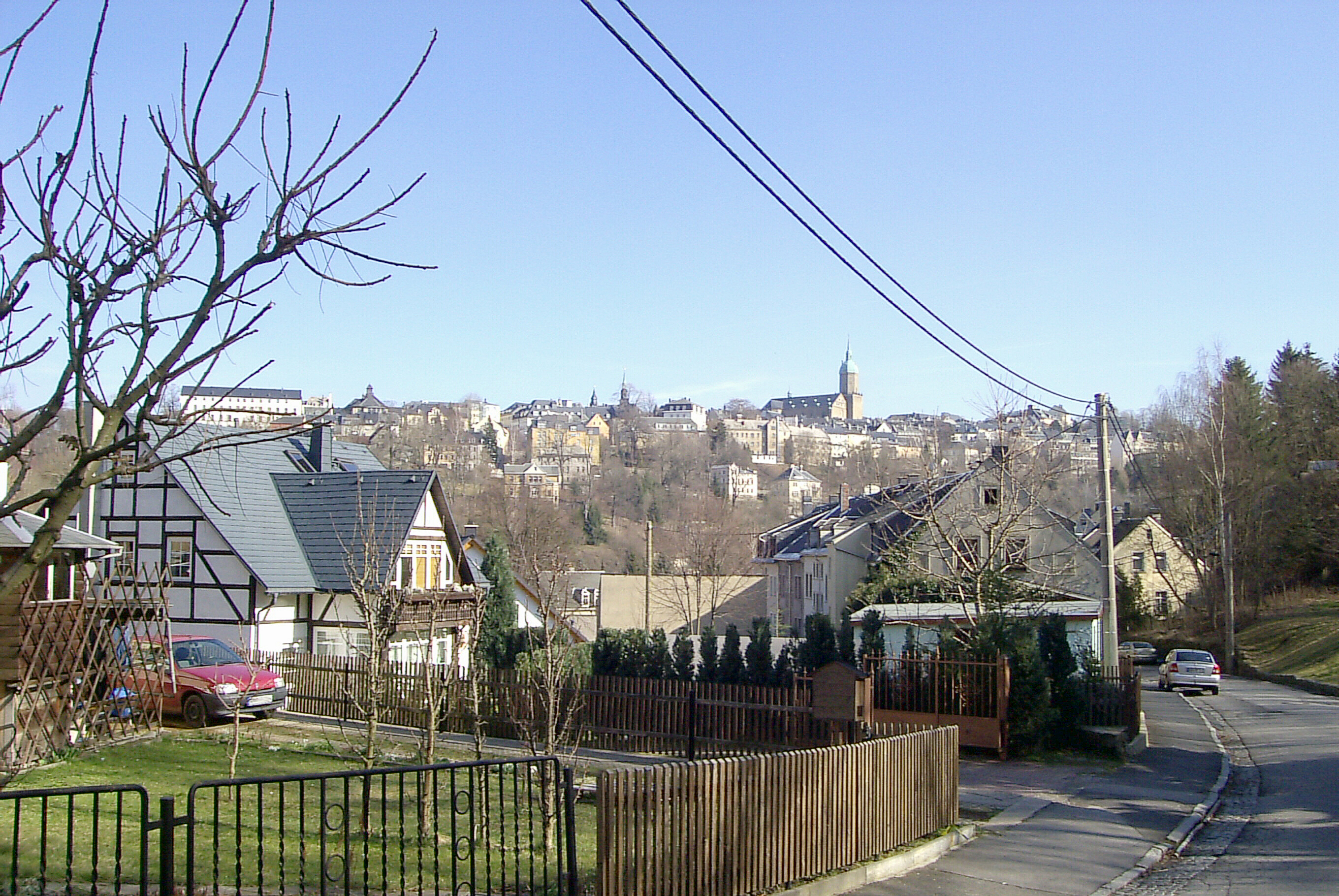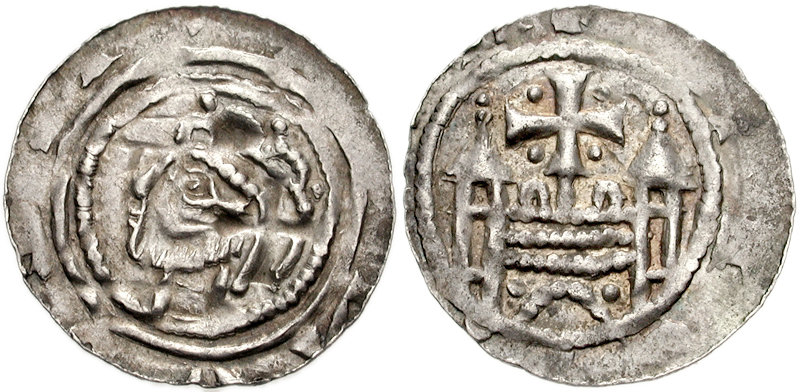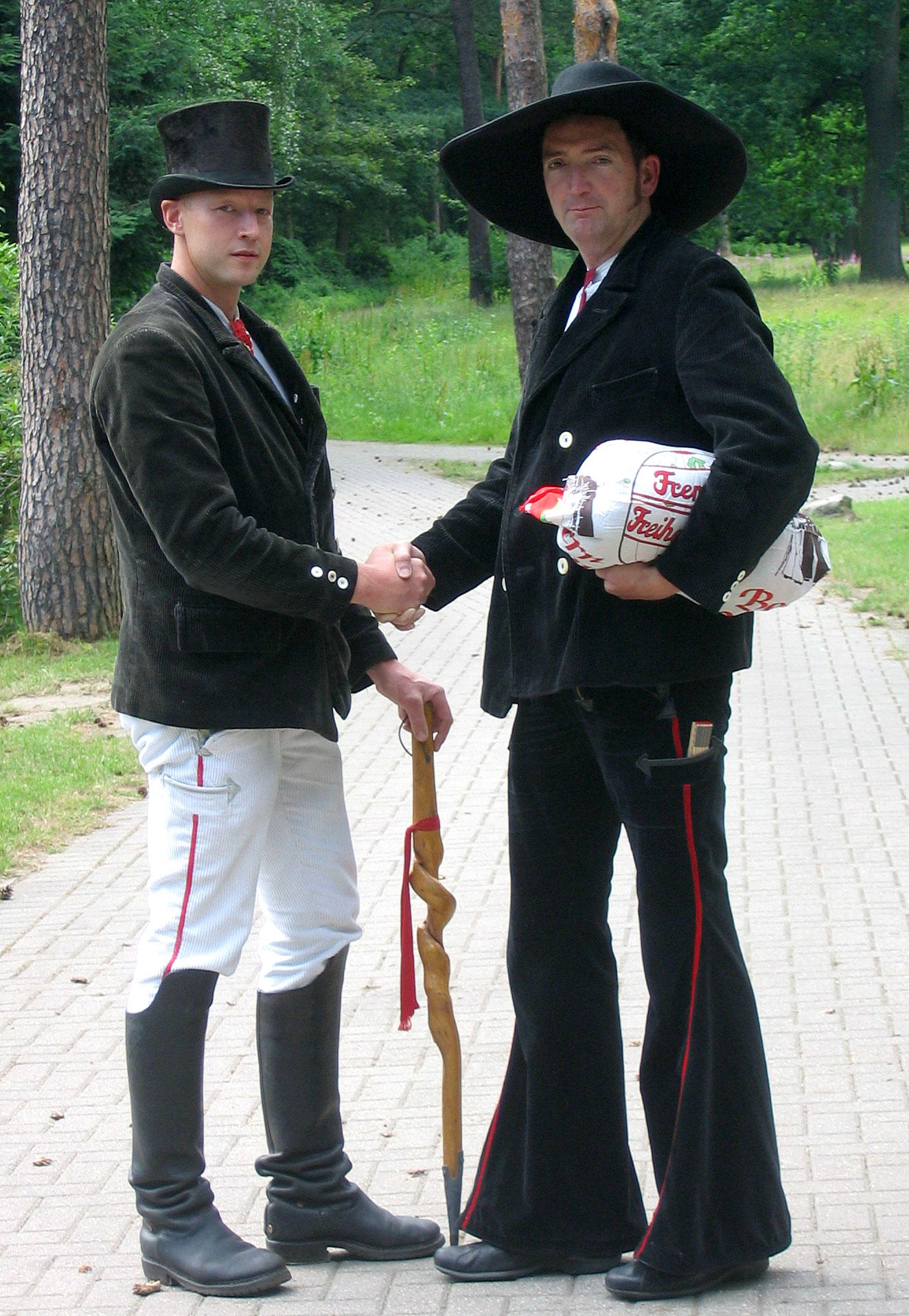|
Schreckenberg
The Schreckenberg is a mountain near Frohnau in the county of Erzgebirgskreis in the central Ore Mountains of Germany. It is . It is located one kilometre northwest of the town of Annaberg-Buchholz in the borough of Frohnau. History The mountain is primarily of historical importance, since it is where Annaberg's silver ore mining began. On 28 October 1491, Caspar Nietzel came across a vein of silver ore not far from the Frohnau Upper Mill. As a result, in 1496, on the opposite bank of the river Sehma, the new town of Neustadt am Schreckenberg grew up, which soon received the name Sankt Annaberg ("Saint Anna's Mountain"). In 1498, Annaberg received the right to mint coins from the Wettins. The Annaberg Mint was set up in or next to the upper mill and for a short time minted the coin known as the '' Schreckenberger'', a widespread means of payment in the Holy Roman Empire. The saying ''You're a rich Annaberger, you've got a bag full of Schreckenbergers'' probably dates to this ti ... [...More Info...] [...Related Items...] OR: [Wikipedia] [Google] [Baidu] |
Frohnau (Annaberg-Buchholz)
Frohnau is a village in the Saxon town of Annaberg-Buchholz in the district of Erzgebirgskreis in southeast Germany. The discovery of silver on the Schreckenberg led in 1496 to the foundation of the neighbouring mining town of Annaberg. The village of Frohnau is best known for its museum of technology, the Frohnauer Hammer, and the visitor mine of ''Markus Röhling Stolln''. The mining area around Frohnau has been selected as a candidate for a UNESCO World Heritage Site: the Ore Mountain Mining Region (''Montanregion Erzgebirge''). Geography The ''Waldhufendorf'' of Frohnau is located about a kilometre west of the town centre of Annaberg. The lower part of the village is located in the valley of the Sehma river on the ''Staatsstraße'' S261. The village runs along a steep village street in a western direction up to the heights of the Schreckenberg. History From 1952 to 1990, Frohnau was part of the Bezirk Karl-Marx-Stadt of East Germany. Sources * * Lothar Kl ... [...More Info...] [...Related Items...] OR: [Wikipedia] [Google] [Baidu] |
Engelsgroschen
The history of Saxon coinage or Meissen-Saxon coinage comprises three major periods: the high medieval regional pfennig period (bracteate period), the late medieval pfennig period and the thaler period, which ended with the introduction of the mark in 1871/72. Rich silver deposits, which were discovered near Freiberg after the middle of the 12th century, helped Saxony to a leading position in German coinage. The Saxon pfennigs ('' Sachsenpfennige'') minted in eastern Saxony are also included, as described in Walther Haupt's ''Sächsischer Münzkunde'' ("Saxon Coinage"). They were minted on the basis of the Carolingian monetary reform, on which the oldest Meissen coinage is based. The different names of these pfennig types indicate a still unclear position within medieval numismatics. ''Hochrandpfennig'' (''Sachsenpfennig'') The 10th and 11th century pfennig type known as the Saxon pfennig ('' Sachsenpfennig'') with a raised edge is the most common pfennig type of this time, ... [...More Info...] [...Related Items...] OR: [Wikipedia] [Google] [Baidu] |
Schreckenberger
The history of Saxon coinage or Meissen-Saxon coinage comprises three major periods: the high medieval regional pfennig period (bracteate period), the late medieval pfennig period and the thaler period, which ended with the introduction of the mark in 1871/72. Rich silver deposits, which were discovered near Freiberg after the middle of the 12th century, helped Saxony to a leading position in German coinage. The Saxon pfennigs ('' Sachsenpfennige'') minted in eastern Saxony are also included, as described in Walther Haupt's ''Sächsischer Münzkunde'' ("Saxon Coinage"). They were minted on the basis of the Carolingian monetary reform, on which the oldest Meissen coinage is based. The different names of these pfennig types indicate a still unclear position within medieval numismatics. ''Hochrandpfennig'' (''Sachsenpfennig'') The 10th and 11th century pfennig type known as the Saxon pfennig ('' Sachsenpfennig'') with a raised edge is the most common pfennig type of this time, ... [...More Info...] [...Related Items...] OR: [Wikipedia] [Google] [Baidu] |
Großgroschen
The history of Saxon coinage or Meissen-Saxon coinage comprises three major periods: the high medieval regional pfennig period (bracteate period), the late medieval pfennig period and the thaler period, which ended with the introduction of the mark in 1871/72. Rich silver deposits, which were discovered near Freiberg after the middle of the 12th century, helped Saxony to a leading position in German coinage. The Saxon pfennigs ('' Sachsenpfennige'') minted in eastern Saxony are also included, as described in Walther Haupt's ''Sächsischer Münzkunde'' ("Saxon Coinage"). They were minted on the basis of the Carolingian monetary reform, on which the oldest Meissen coinage is based. The different names of these pfennig types indicate a still unclear position within medieval numismatics. ''Hochrandpfennig'' (''Sachsenpfennig'') The 10th and 11th century pfennig type known as the Saxon pfennig ('' Sachsenpfennig'') with a raised edge is the most common pfennig type of this time, ... [...More Info...] [...Related Items...] OR: [Wikipedia] [Google] [Baidu] |
Frohnauer Hammer
The Frohnauer Hammer is an historic hammer mill in Frohnau, a village in the municipality of Annaberg-Buchholz in the Ore Mountains of southeast Germany. The mill is an important witness to proto-industrial development in the Ore Mountains. Of the once-numerous hammer mills only three others remain working in Saxony: the Dorfchemnitz Iron Hammer Mill, the Grünthal Copper Hammer Mill and the Freibergsdorf Hammer Mill. In 1907 the Frohnauer Hammer Mill on the Sehma river became the first technical monument in Saxony. The museum complex includes the hammer mill itself, an exhibition of forged artefacts, a hand forge, a mechanical "Christmas hill" (''Weihnachtsberg'') and a bobbin lace room. History The Frohnauer Hammer goes back to the 15th century when it was mentioned as a corn mill with four millstones. On 28 October 1491, Caspar Nietzel discovered a deposit of silver ore on the Schreckenberg mountain, not far from the mill. That same year, mining courts (''Berggeri ... [...More Info...] [...Related Items...] OR: [Wikipedia] [Google] [Baidu] |
Saxony
Saxony (german: Sachsen ; Upper Saxon: ''Saggsn''; hsb, Sakska), officially the Free State of Saxony (german: Freistaat Sachsen, links=no ; Upper Saxon: ''Freischdaad Saggsn''; hsb, Swobodny stat Sakska, links=no), is a landlocked state of Germany, bordering the states of Brandenburg, Saxony-Anhalt, Thuringia, Bavaria, as well as the countries of Poland and the Czech Republic. Its capital is Dresden, and its largest city is Leipzig. Saxony is the tenth largest of Germany's sixteen states, with an area of , and the sixth most populous, with more than 4 million inhabitants. The term Saxony has been in use for more than a millennium. It was used for the medieval Duchy of Saxony, the Electorate of Saxony of the Holy Roman Empire, the Kingdom of Saxony, and twice for a republic. The first Free State of Saxony was established in 1918 as a constituent state of the Weimar Republic. After World War II, it was under Soviet occupation before it became part of the communist East Ger ... [...More Info...] [...Related Items...] OR: [Wikipedia] [Google] [Baidu] |
Leipzig
Leipzig ( , ; Upper Saxon: ) is the most populous city in the German state of Saxony. Leipzig's population of 605,407 inhabitants (1.1 million in the larger urban zone) as of 2021 places the city as Germany's eighth most populous, as well as the second most populous city in the area of the former East Germany after (East) Berlin. Together with Halle (Saale), the city forms the polycentric Leipzig-Halle Conurbation. Between the two cities (in Schkeuditz) lies Leipzig/Halle Airport. Leipzig is located about southwest of Berlin, in the southernmost part of the North German Plain (known as Leipzig Bay), at the confluence of the White Elster River (progression: ) and two of its tributaries: the Pleiße and the Parthe. The name of the city and those of many of its boroughs are of Slavic origin. Leipzig has been a trade city since at least the time of the Holy Roman Empire. The city sits at the intersection of the Via Regia and the Via Imperii, two important medieval trad ... [...More Info...] [...Related Items...] OR: [Wikipedia] [Google] [Baidu] |
Job Creation
Unemployment, according to the OECD (Organisation for Economic Co-operation and Development), is people above a specified age (usually 15) not being in paid employment or self-employment but currently available for work during the reference period. Unemployment is measured by the unemployment rate, which is the number of people who are unemployed as a percentage of the labour force (the total number of people employed added to those unemployed). Unemployment can have many sources, such as the following: * new technologies and inventions * the status of the economy, which can be influenced by a recession * competition caused by globalization and international trade * policies of the government * regulation and market Unemployment and the status of the economy can be influenced by a country through, for example, fiscal policy. Furthermore, the monetary authority of a country, such as the central bank, can influence the availability and cost for money through its monetary ... [...More Info...] [...Related Items...] OR: [Wikipedia] [Google] [Baidu] |
Journeymen
A journeyman, journeywoman, or journeyperson is a worker, skilled in a given building trade or craft, who has successfully completed an official apprenticeship qualification. Journeymen are considered competent and authorized to work in that field as a fully qualified employee. They earn their license by education, supervised experience and examination. Although journeymen have completed a trade certificate and are allowed to work as employees, they may not yet work as self-employed master craftsmen. The term "journeyman" was originally used in the medieval trade guilds. Journeymen were paid daily and the word "journey" is derived from ''journée'', meaning "whole day" in French. Each individual guild generally recognised three ranks of workers: apprentices, journeymen, and masters. A journeyman, as a qualified tradesman could become a master and run their own business, but most continued working as employees. Guidelines were put in place to promote responsible tradesmen, who ... [...More Info...] [...Related Items...] OR: [Wikipedia] [Google] [Baidu] |
Castle
A castle is a type of fortified structure built during the Middle Ages predominantly by the nobility or royalty and by military orders. Scholars debate the scope of the word ''castle'', but usually consider it to be the private fortified residence of a lord or noble. This is distinct from a palace, which is not fortified; from a fortress, which was not always a residence for royalty or nobility; from a ''pleasance'' which was a walled-in residence for nobility, but not adequately fortified; and from a fortified settlement, which was a public defence – though there are many similarities among these types of construction. Use of the term has varied over time and has also been applied to structures such as hill forts and 19th-20th century homes built to resemble castles. Over the approximately 900 years when genuine castles were built, they took on a great many forms with many different features, although some, such as curtain walls, arrowslits, and portcullises, were ... [...More Info...] [...Related Items...] OR: [Wikipedia] [Google] [Baidu] |
Romanticism
Romanticism (also known as the Romantic movement or Romantic era) was an artistic, literary, musical, and intellectual movement that originated in Europe towards the end of the 18th century, and in most areas was at its peak in the approximate period from 1800 to 1850. Romanticism was characterized by its emphasis on emotion and individualism, clandestine literature, paganism, idealization of nature, suspicion of science and industrialization, and glorification of the past with a strong preference for the medieval rather than the classical. It was partly a reaction to the Industrial Revolution, the social and political norms of the Age of Enlightenment, and the scientific rationalization of nature. It was embodied most strongly in the visual arts, music, and literature, but had a major impact on historiography, education, chess, social sciences, and the natural sciences. It had a significant and complex effect on politics, with romantic thinkers influencing conservatism, libe ... [...More Info...] [...Related Items...] OR: [Wikipedia] [Google] [Baidu] |





.jpg)




